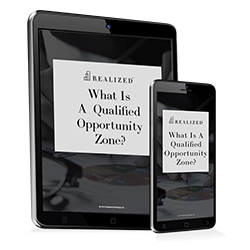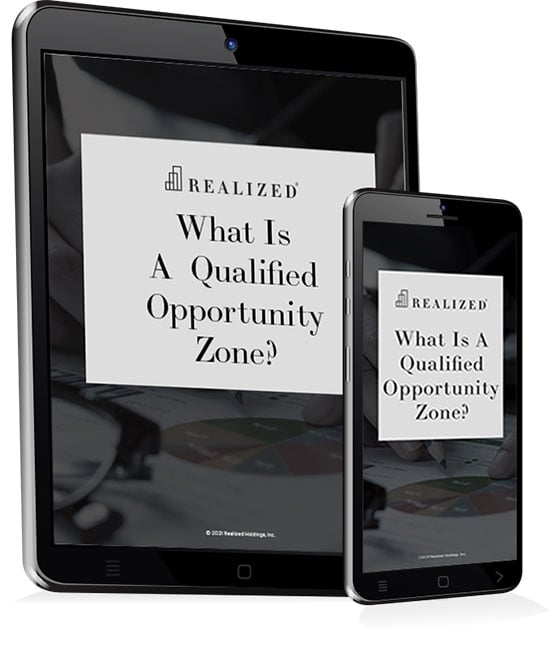
Here is the big picture of the Qualified Opportunity Zone program, broken into three parts.
- First, Qualified Opportunity Zones (QOZs) are economically-challenged areas, which are designated by the Internal Revenue Service (IRS) and the U.S. Department of the Treasury.
- Second, economic improvements in these areas (via construction, adaptive re-use, and/or business formation) are funded by Qualified Opportunity Funds, or QOFs.
- Third, these QOFs are supported by tax-deferred capital gains from private investors.
To use a common business adage, the above provides a 30,000-foot view of the QOZ program. Yet, when you take a deeper dive, you’ll find that these designated areas -- and their funds -- are hugely diverse.
You already know that, before handing over your capital gains to a QOF manager, you should understand the project it will support, among other things. It’s also a good idea to have some knowledge about a fund's actual structure, and then determine how well it will fit with your particular investment needs.
Number of Assets
One decision you’ll be called on to consider when finding your ideal QOF investment will be whether you want to put your capital gains into an instrument that contains only one property, or one that has a lot of them. In other words, a single-asset fund, or a multi-asset one.
The main benefit of a multi-asset QOF is something we’ve discussed in previous blogs: Diversification. According to Modern Portfolio Theory, a diverse investment portfolio can reduce an investor’s risk. The same could be said of QOZ projects. From a theoretical standpoint, many projects help spread the investment risk.
But there can also be advantages in a single-asset fund, such as:
- Better in-depth understanding of, and focus on, a single project versus many projects
- A direct target for your QOF dollars; rather than being spread among many different projects, the funds will be funneled specifically to the development or rehabbing that sole multifamily, self-storage, or office property
- The potential of a higher risk-return profile
Types of assets
Returning to the idea of diversification, another issue to examine is diversified versus focused QOFs. The focused fund pinpoints a single asset type. If the QOF supports workforce housing, then monies raised will go toward buying, developing, and owning workforce housing. The fund could own many workforce housing properties, or just one or two.
Then there is the diversified fund, which can include different types of real estate product types. There is a lot to be said about fund managers sticking to what they know. But the QOF manager with a background in workforce housing could also have expertise in small retail centers, or might know a thing or two about hospitality properties or medical office buildings, and could include these properties in the fund. The moral of the story, don’t automatically pass over a diversified Qualified Opportunity Fund. Research it, instead, to determine if it will work with your investment.
How Much Personnel
Then, there is consideration around the amount of personnel involved with the fund, better known as single-tier versus multi-tier funds. With the single-tier structure, the QOF manager handles most of the activities, from development, to raising capital, to exit strategies and disbursements. You’ll typically find single-tier funds handling only a few projects, generally no more than five.
The multi-tier QOFs can be led by managers who might not be as hands-on when it comes to projects. Rather, these entities will be more likely to form joint ventures, or outsource to developers, capital entities, and other companies. Multi-tier structures do allow for greater scale and diversification when it comes to product type, geography, developers, and operators. But, the potential returns to you, the investor, could be lower, as more entities need to be paid for their efforts.
To Be (Transparent) or Not to Be
Finally, the question to consider is whether your targeted fund should be identified, blind, or semi-blind. Here are the differences:
- Managers of a QOF identified fund have already launched the products, meaning you already know what is underway, and what is being financed. While this transparency can be great, identified funds can be limited in both scale and diversification.
- The blind QOF is out to raise money first, then to find projects on which to spend it. It can be riskier to invest in a QOF that doesn’t yet own real estate. However, the blind funds can have more financial resources and size, leading to potentially higher returns.
- The semi-blind fund structure is a hybrid of the identified and blind fund types. These QOFs might have “seed” assets in place, with more projects added over time. From an investment perspective, these can be a little more predictable than the blind funds, but still have an element of risk.
No such thing as a “bad” fund
None of the above funds are good or bad. They’re funds, with the goal of improving economically challenged areas, while deferring taxes for investors. As such, the process of determining the best Qualified Opportunity Fund type for your investment purposes is no different from that of determining other investments. The information you’ll need to know should include the types of projects involved, the fund’s size and fee structure, and who is running it.
Just as important is figuring out your investment objectives and portfolio goals. With that information in hand, you can be in a better position to determine your level of risk appetite, and the type of fund that will meet your level of risk tolerance.
To learn more about QOF funds and how they can help support your investment goals, contact Realized Holdings by logging on to realized1031.com or by calling 877-797-1031.
This material is for general information and educational purposes only. Information is based on data gathered from what we believe are reliable sources. It is not guaranteed as to accuracy, does not purport to be complete and is not intended to be used as a primary basis for investment decisions. It should also not be construed as advice, meeting the particular investment needs of any investor.
There is no guarantee that the investment objectives of any particular program will be achieved.
The actual amount and timing of distributions paid by programs is not guaranteed and may vary. There is no guarantee that investors will receive distributions or a return of their capital. These programs can give no assurance that they will be able to pay or maintain distributions, or that distributions will increase over time.



